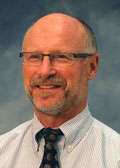
GAINESVILLE, Fla. – Rural residents are nearly twice as likely as their urban counterparts to postpone timely trips to the dentist, seeking help only after they develop a problem and oral pain is severe, University of Florida researchers report. The delay results in widespread dissatisfaction with treatment and less than optimal outcomes.
“What we found is there is a group of people who wait until their condition is of sufficient painful intensity and duration before deciding that its bad enough to pick up the phone and call the dentist,” said study investigator Joseph Riley, Ph.D., an assistant professor of public health services and research at UFs College of Dentistry. “There is evidence that these people assume this problem-oriented approach to oral health because of low access to care, whether that be due to an inability to pay or the lack of dentists practicing in rural areas,” Riley added.
UF researchers, writing in the April issue of Public Health Reports, noted similar trends among blacks and women, though men with painful symptoms were the group most likely to entirely avoid dental visits, possibly attempting to self-medicate their pain at home to avoid going to the dentist.
Over a four-year period, the researchers studied patterns in access to dental care among 703 randomly selected people aged 45 years and older living in rural or urban counties in North Florida. Researchers interviewed each participant and conducted an oral examination at the beginning of the study. They then conducted follow-up telephone interviews at six-month intervals to track financial status, symptoms of oral pain, and usage of dental services and treatment. Study participants were also interviewed in person and underwent additional oral examinations two and four years into the study. Study investigators found rural residents and people who take a problem-oriented rather than preventive approach to oral health care were more likely to need emergency dental care for oral pain. People who live in rural areas and take a problem-oriented approach of opting to wait until oral discomfort worsened were at the highest risk of anyone for needing pain-related emergency treatment.
Over the course of the study, 23 percent of the participants experienced at least one emergency dental visit because of painful symptoms due to afflictions such as toothaches and abscesses. Sixty-seven percent of those who reported an emergency dental visit due to pain rated their discomfort severe. Overall, men were 20 percent less likely to seek and receive dental care at all, even when suffering from severe oral pain. Only 56 percent of patients who visited the dentist for emergency treatment of painful oral conditions described themselves as “very satisfied” with the outcome of their treatment, versus 79 percent of those who sought urgent care but were pain-free at the time. “What we found is that patients who had urgent dental visits because of pain were less likely to be satisfied by the time it took to be seen, the dental treatment they received and by the actual outcome of the visit,” said Riley.
Riley said there is nothing unique about the dental choices people in rural North Florida make compared with residents living elsewhere. The UF study findings are consistent with data gathered by the National Center for Health Statistics, wherein minority and poor populations carry the burden of oral health problems, he said. “The recent Surgeon Generals report on oral health underscores the public health impact of oral health problems in the United States,” said study co-investigator Gregg Gilbert, D.D.S., M.B.A., F.A.A.H.D., a professor and chairman of diagnostic sciences at the University of Alabama at Birmingham School of Dentistry. “Unfortunately, in the oral health arena, those most in need of care are the least likely to get it, and a significant amount of suffering and embarrassment is part of everyday life for certain segments of our population.”
The U.S. Surgeon Generals landmark 2000 report on the countrys oral health outlines substantial access to care barriers, such as ability to pay and a shortage of dentists in certain areas, and notes 11 percent of the nations rural population has never visited a dentist. The report also calls the oral cavity the “mirror of health and disease.” More than 90 percent of systemic diseases – such as diabetes, leukemia, cardiovascular disease and anemia – have oral manifestations, and people who have neglected their oral health are more likely to also have other medical problems. Riley said he believes that access to care is not the only factor at play in determining why people with oral pain delay seeking dental treatment. “Dentistry is really about social and psychological factors; its perspective, and the preventive versus problem-oriented approach to dental care is an attitudinal belief,” he said. “Therefore, its something that can be changed.”

